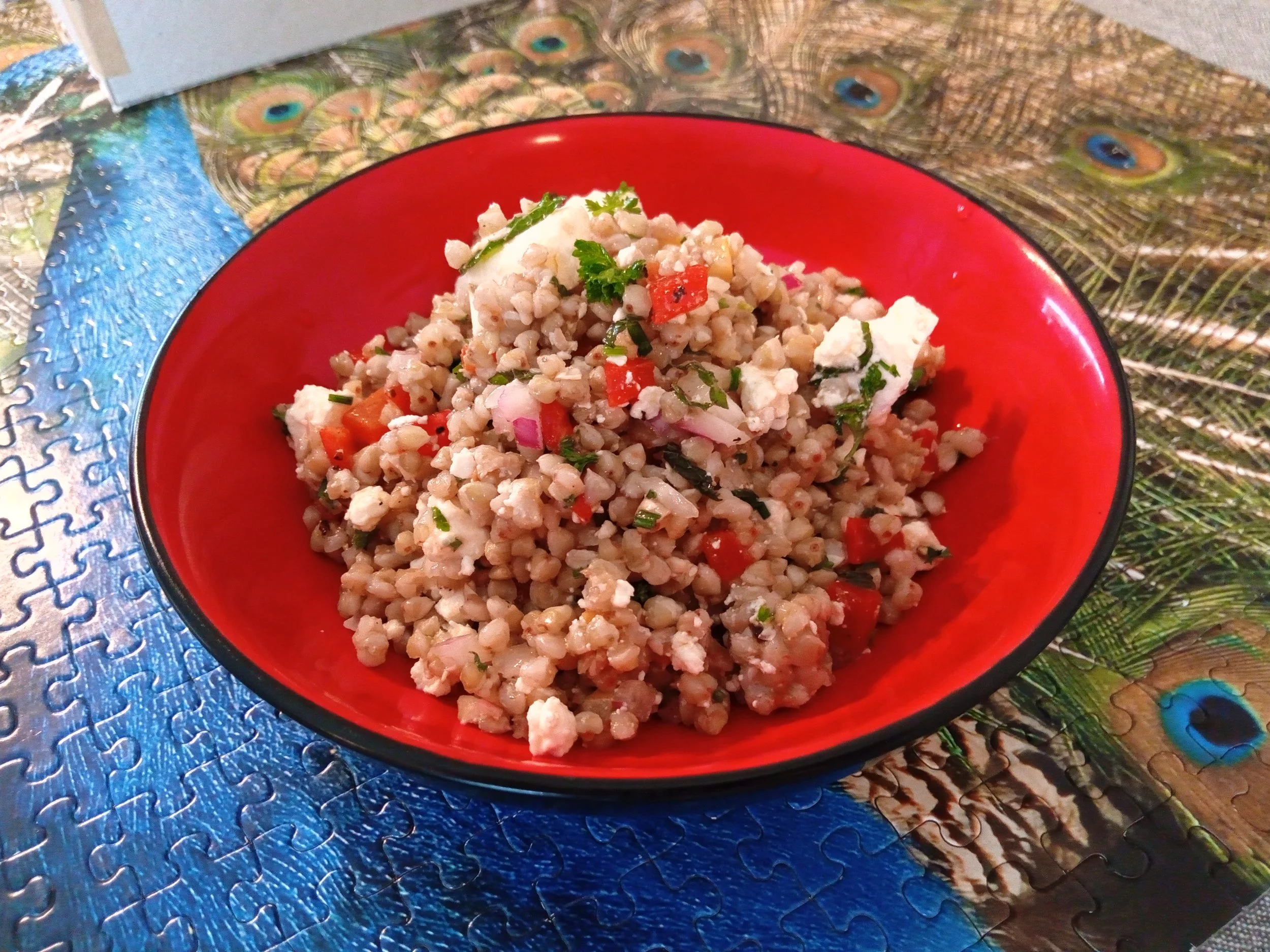Sprouted Buckwheat Tabbouleh
This salad is in my regular lunch rotation - it satisfies everything I want in a lunch: easy to make, delicious, filling and super nutritious. You don’t have to sprout the buckwheat, but it does make the protein in this pseudo-grain easier to digest and the process also reduces troublesome phytates - which interfere with mineral absorption and can cause other issues for some.
Buckwheat is gluten-free, wonderfully nutrient-dense and
makes a great substitute for the Bulgar wheat that is traditionally used in tabbouleh. You can read more about the health benefits of buckwheat in my Buckwheat Crêpes with feijoas
recipe HERE.
Tabbouleh is a foundational part of the afternoon meze (mixed plate) in some Eastern European countries and the Arab world. For lunch it is enough on its own. For a social grazing-type meal, it is nice served alongside pita breads, olives, tzatziki, fattoush salad, chickpea salad, baba ganouj, dolma, hard-boiled eggs, fried calamari or octopus and grilled cheeses….somebody stop me…this is starting to sound like a feast!
---✔ Proven Results ---✔Evidence-based approach ---✔Consultations available anywhere in the world ---✔Registered Naturopath & Nutritionist
---✔ Proven Results ---✔Evidence-based approach ---✔Consultations available anywhere in the world ---✔Registered Naturopath & Nutritionist
This salad will last up to 4 days in the fridge, so it is well-suited to prepare for lunches during the week.
Buckwheat Tabbouleh
2 cups Buckwheat Groats - soaked and sprouted
1/2 cup Extra Virgin Olive Oil
1/4 cup Apple Cider Vinegar (or red wine vinegar)
1/2 tsp Sea Salt
2 Roasted Red Peppers
1/2 Lemon (preserved, 2 quarters, rind only) or zested
10 Mint Leaves
1 Garlic (cloves, micro-zested)
1/4 tsp Black Pepper
2 cups Parsley (chopped)
200 grams Greek Feta Cheese (sheep or goat)
DIRECTIONS
Start by soaking the buckwheat overnight. Cover the buckwheat in filtered water and cover, leave at room temperature overnight. In the morning, strain and rinse (the water will be a little slick and slimy, this is normal!). At this point you can either sprout the buckwheat, which takes 2-4 days depending on the temperature - or cook it.
Sprouting directions - simply put the rinsed buckwheat in a container and cover with a kitchen towel. Rinse and drain the buckwheat twice a day. Inspect the grains as you do this, when they are sprouted, you will see a very small sprout pushing out of the grain. For maximum nutritional benefit, the sprout should be about as long as 1/3 of the length of the grain, so in the case, not very long.
When you are ready to cook the buckwheat, add it to a pot with 2 cups of filtered water. You can throw in a small seaweed frond if you have it on hand. (This helps break down the grains and supplies minerals). Bring to a boil then simmer on low until the water is absorbed, or the buckwheat is tender. Drain (if there is extra water) and rinse the grains under cool water - set aside.
Meanwhile, while the buckwheat cooks, combine the oil, vinegar, finely chopped herbs, salt, pepper, finely minced garlic, lemon zest (or preserved lemon) and chopped red pepper.
Add the cooled buckwheat to the olive oil mixture and mix thoroughly. Taste, season as desire, crumble in the feta in generous chunks, divide into portions and keep chilled until ready to eat.
Click here to get this recipe delivered to your inbox , Enjoy!
Yours in health,
Camille Hoffman
Naturopath, Nutritionist & Medical Herbalist



